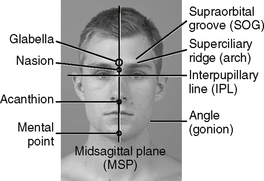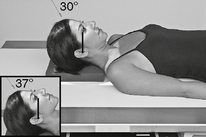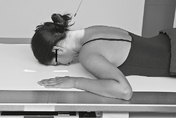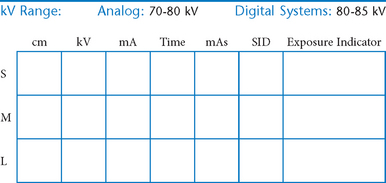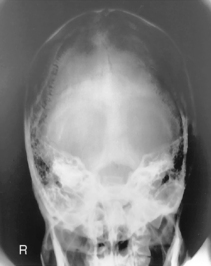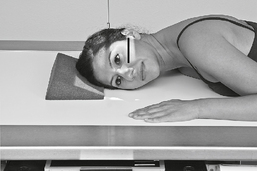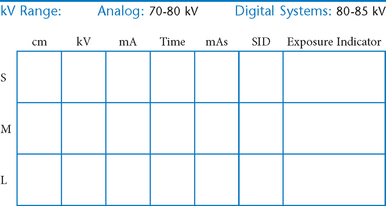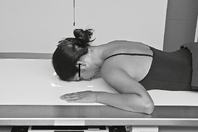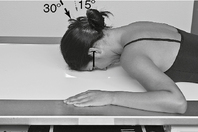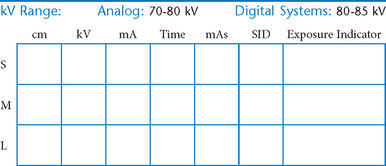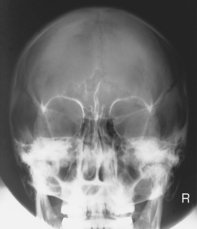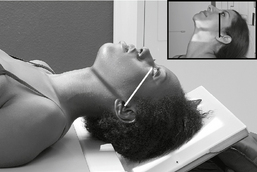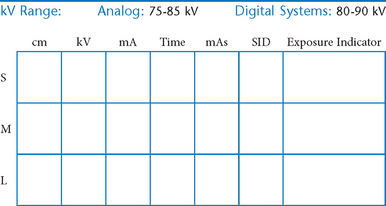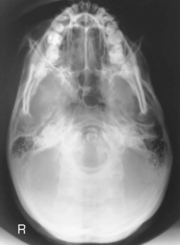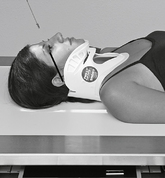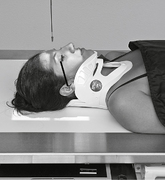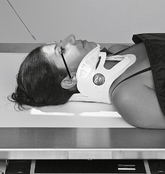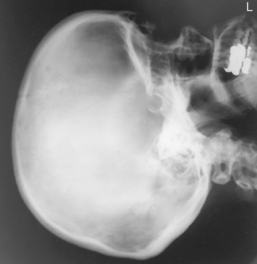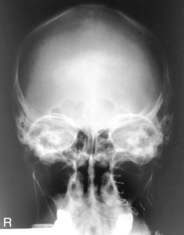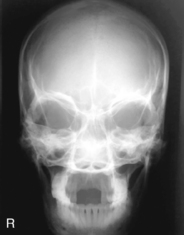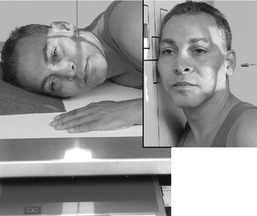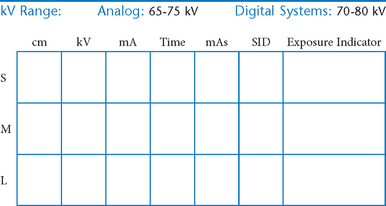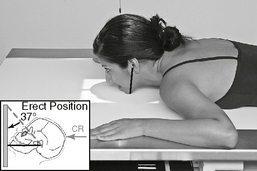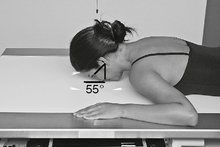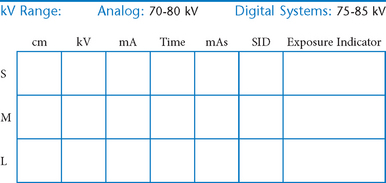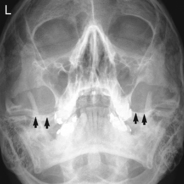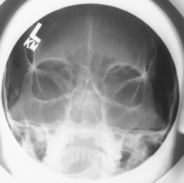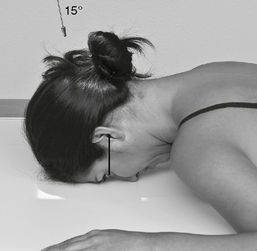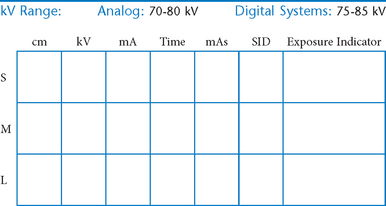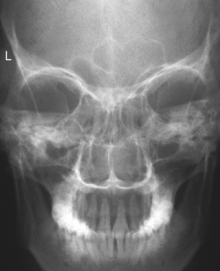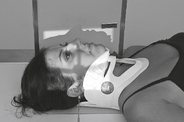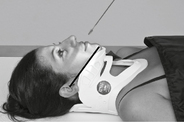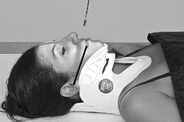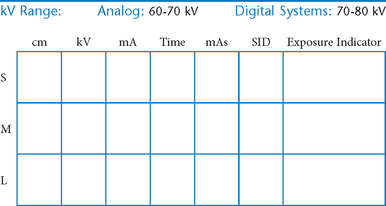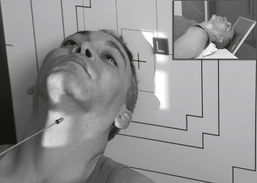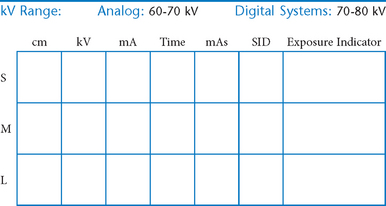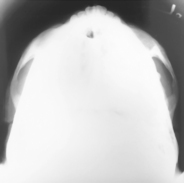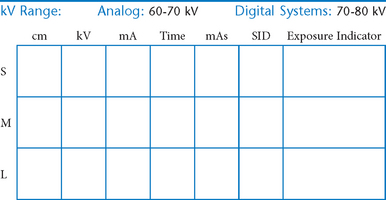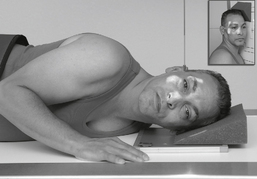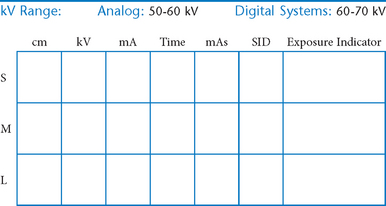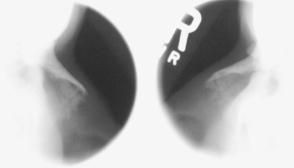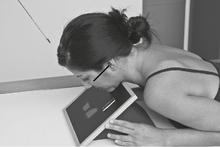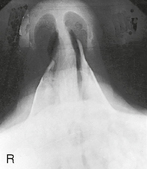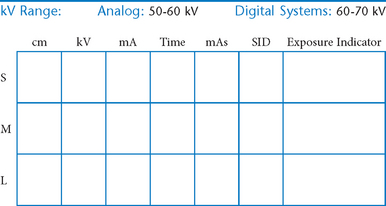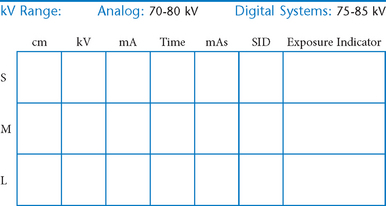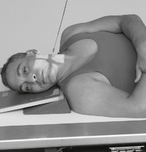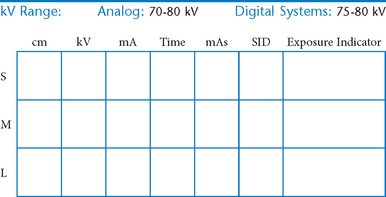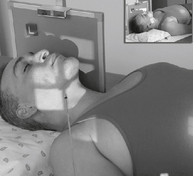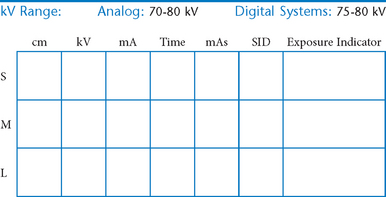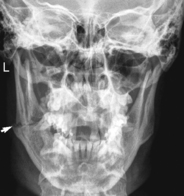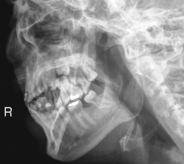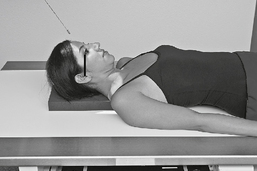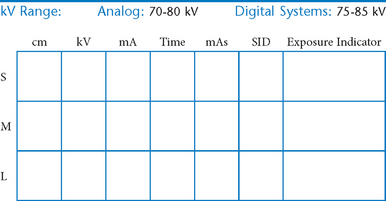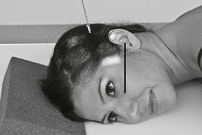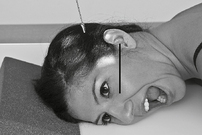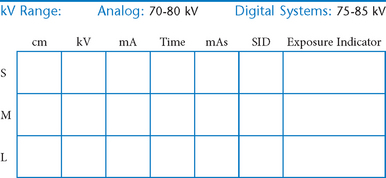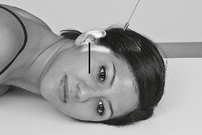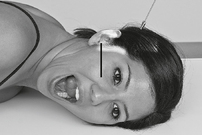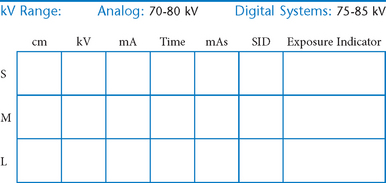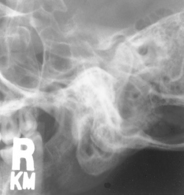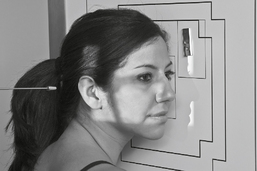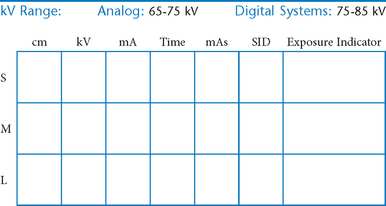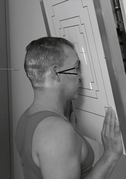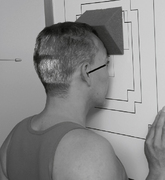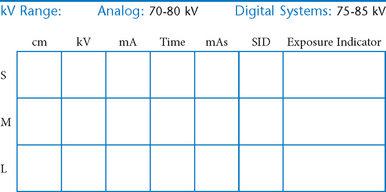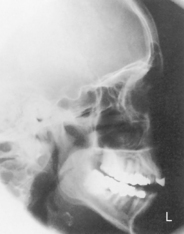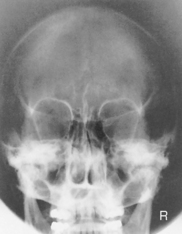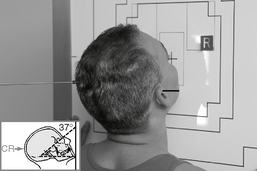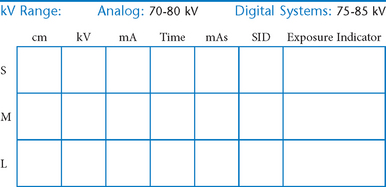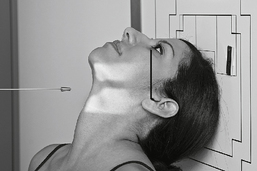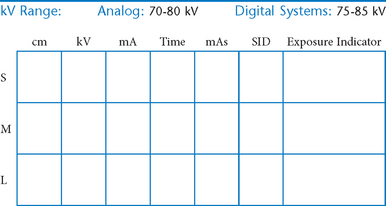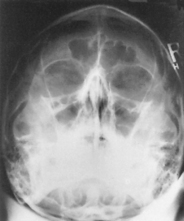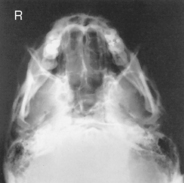Skull, Facial Bones, and Paranasal Sinuses
Cranial landmarks and positioning lines used in skull and facial bones positioning.
C Infraorbitomeatal line (IOML) (Reid’s base line, or “base line,” base of cranium)
AP (PA) Axial Skull*
Lateral Skull*

PA (0° and 15°) Caldwell Skull*

Note: Some departmental routines include a 0° PA to better demonstrate the frontal bone in addition to the 15° PA axial Caldwell.
PA (0°) and PA Axial Caldwell (15° Caudad)
Submentovertex (SMV) Skull*

Position
• Seated erect or supine with head extended over end of table resting top of head against grid IR (may tilt table up slightly)
Submentovertex (SMV) Skull
Lateral Trauma Skull*

Warning: Do NOT elevate or move patient’s head before cervical spine injuries have been ruled out.
AP Trauma Skull Series*

Warning: With possible spine or severe head injuries, take all projections AP without moving head or without removing cervical collar if present.
Trauma AP (0°) and AP Axial (15° Cephalad) Projections
Facial Bones—Lateral*

Lateral Facial Bones
Parietoacanthial and Modified Parietoacanthial
Facial Bones—PA Axial (Caldwell)*

Position
• Seated erect or prone on table, MSP aligned to CR and to centerline of IR
• With forehead and nose resting on tabletop, adjust head to place OML perpendicular to IR; ensure no rotation or tilt.
Facial Bones—Trauma Series*
Warning: With possible spine or severe head injuries, take all projections supine without moving head or without removing cervical collar if present.
Optic Foramina—Parieto-orbital Oblique*

Position
• Seated erect or prone on table
• As a starting reference, adjust the head so the nose, cheek, and chin are touching the tabletop.
• Adjust the head so the AML is perpendicular to the IR, and the midsagittal plane is 53° to the IR (use angle indicator).
Zygomatic Arches—Bilateral*
Submentovertex (SMV) Projection

Position
• Seated erect or supine with head extended over end of table resting top of head against grid IR (may tilt table up slightly)
Zygomatic Arches—Tangential*
(Oblique Inferosuperior Projection)

Bilateral Zygomatic Arches—AP Axial*
Nasal Bones—Lateral*

Nasal Bones*
Mandible—PA and PA Axial*

Position
• Seated erect or prone on table, head aligned to centerline
• With forehead and nose resting on tabletop, adjust head to place OML ⊥ to IR.
Mandible—Axiolateral Obliques*

R and L sides generally taken for comparison unless contraindicated.
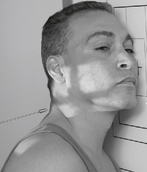
Mandible—Trauma Axiolateral Oblique*

For trauma patients unable to cooperate.
Position
• Supine, no rotation of head, MSP ⊥ to TT
• IR on edge next to face, parallel to MSP with lower edge of IR ≈1″ (2.5 cm) below lower border of mandible
Note:
May rotate head toward IR slightly (10°–15°) to better visualize body or mentum of mandible if this is area of interest.
AP Axial Mandible*
Temporomandibular Joints*
Axiolateral Oblique (Modified Law Method)

R and L sides for comparison in both open and closed mouth positions.
Position
• Seated erect or semiprone on table, affected side down
• Adjust chin to place IOML parallel to top edge of IR.
• Anterior head (midsagittal plane) rotated 15° toward IR, no tilt, IPL remains perpendicular to IR
• Portion of IR being exposed centered to projected CR
• Second exposure in same position except with mouth fully open
Temporomandibular Joints*

R and L sides for comparison in both open and closed mouth positions.
Position
• Seated erect or semiprone, affected side down
• Adjust chin to place IOML parallel to top and bottom edges of IR, true lateral, no rotation or tilt of head.
• Portion of IR being exposed centered to projected CR
• Second exposure in same position except with mouth fully open
Axiolateral Oblique (Modified Law Method) and Axiolateral (Schuller method) TMJ Projections
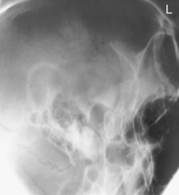
Fig. 8-54 Axiolateral projection—open mouth; TMJ shown with condyle moved to anterior margin of fossa (Schuller).![]()
Lateral Paranasal Sinuses*

Requires an erect position with horizontal CR to demonstrate air-fluid levels.
PA Paranasal Sinuses*
Paranasal Sinuses*
Paranasal Sinuses*
Parietoacanthial (Waters Method) Sinuses and Submentovertex (SMV)
Evaluation Criteria
Position:
• Waters: Petrous ridges just inferior to floor of maxillary sinuses. No rotation; equal distance between orbits and lateral skull
• SMV: Mandibular condyles projected anterior to petrous bone. No rotation or tilt; symmetry of petrous pyramids and equal distance between mandibular border and lateral skull
*Bontrager Textbook, 8th ed, p. 411.
*Bontrager Textbook, 8th ed, p. 412.
*Bontrager Textbook, 8th ed, pp. 413 and 414.
*Bontrager Textbook, 8th ed, p. 415.
*Bontrager Textbook, 8th ed, p. 594.
*Bontrager Textbook, 8th ed, p. 595.
*Bontrager Textbook, 8th ed, p. 418.
*Bontrager Textbook, 8th ed, pp. 419 and 421.
*Bontrager Textbook, 8th ed, p. 420.
*Bontrager Textbook, 8th ed, p. 597.
*Bontrager Textbook, 8th ed, p. 427.
*Bontrager Textbook, 8th ed, p. 424.
*Bontrager Textbook, 8th ed, p. 425.
*Bontrager Textbook, 8th ed, p. 426.
*Bontrager Textbook, 8th ed, p. 422.
*Bontrager Textbook, 8th ed, p. 423.
*Bontrager Textbook, 8th ed, p. 429.
*Bontrager Textbook, 8th ed, p. 428.
*Bontrager Textbook, 8th ed, pp. 428 and 598.
*Bontrager Textbook, 8th ed, p. 430.
*Bontrager Textbook, 8th ed, p. 434.
*Bontrager Textbook, 8th ed, p. 435.
*Bontrager Textbook, 8th ed, p. 436.
*Bontrager Textbook, 8th ed, p. 437.
*Bontrager Textbook, 8th ed, p. 438.
*Bontrager Textbook, 8th ed, p. 439.
 AP axial (Towne method) and PA axial (Haas method) (R)
AP axial (Towne method) and PA axial (Haas method) (R)
